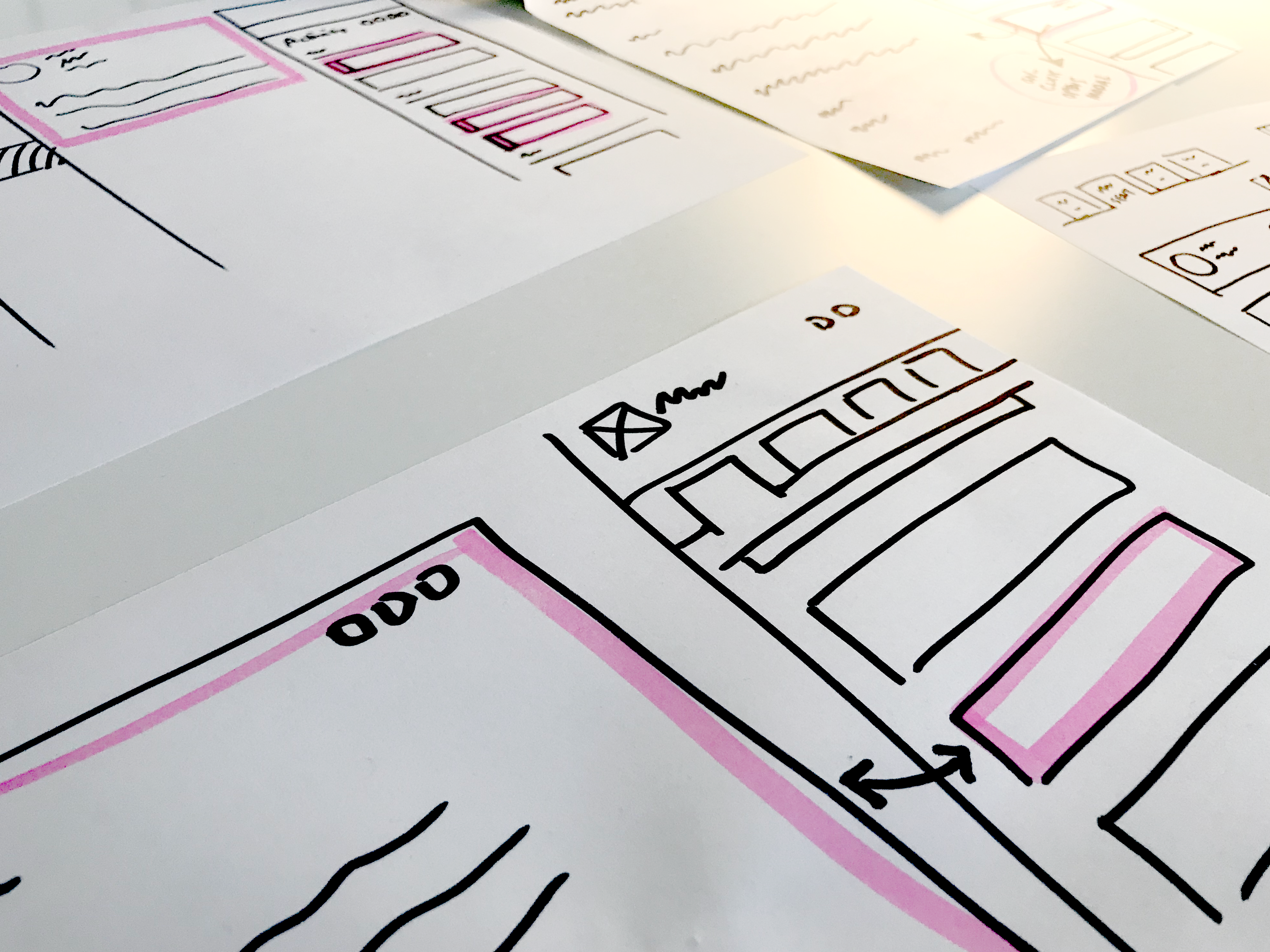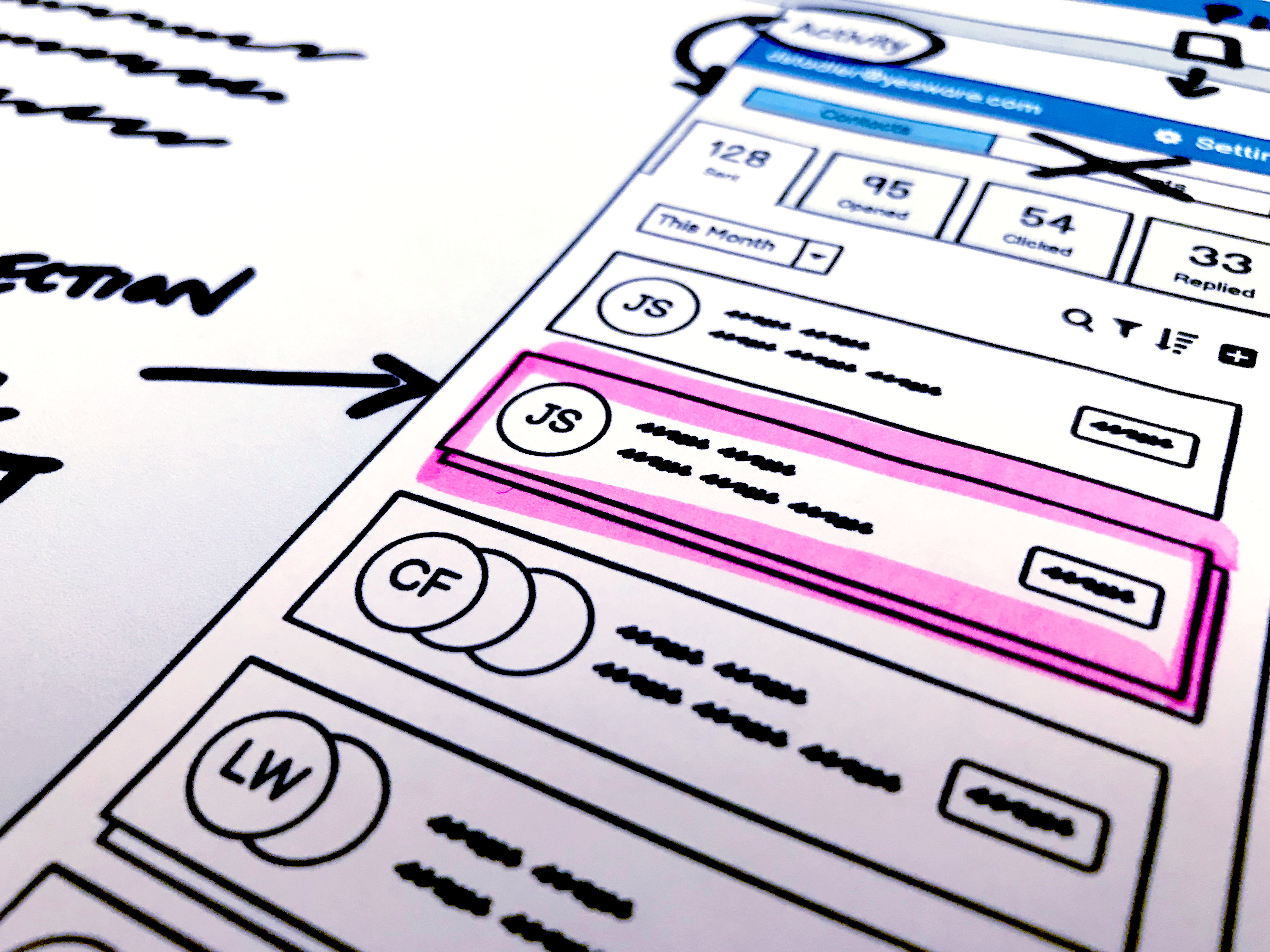I’ve worked with many teams that sometimes are “Too Precious” with our work of developing world-class software. Just because our aspirations are lofty, does not mean our path there needs to be equally complex. Sometimes it really is as simple as starting with a sharpie marker. Get your ideas out, early and often. Permanent markers on some scrap-paper work great! Nothing with erasers. We want to move at pace, and with confidence. Even if we’re wrong!
Of course, this is all dependent on context, but when we have a goal in my mind – I would encourage the working group of PMs, Designers, and Engineers to start out loose and light. It’s ok to not know the solution straight away. Talking through problems is a great way to generate the means to your ends. Make sure you have at least one PM, Designer, and Engineer when at all possible. The whole idea is to get all the perspectives jamming on the high level notes. I’ve outlined below a few reasons how this type of approach can benefit your team and software alike.


1. Enhancing Communication with Low-Fidelity Sketches
Low-fidelity sketches, often referred to as “fat marker” sketches, play a crucial role in the early stages of product development. These sketches provide just enough detail to convey ideas without overwhelming the team with intricate specifics. They are the broad strokes of a user experience that withold the fine details. This simplicity encourages open dialogue and allows team members to focus on the core concepts rather than getting bogged down by fine details. In my experience at Yesware and Vendasta, using these sketches facilitated more productive discussions by enabling everyone to quickly grasp the overall vision and contribute their insights.
2. Facilitating Informed Decision-Making
Using low-fidelity sketches helps software teams have informed conversations about which features to build next. These sketches provide a visual representation that is easy to understand, helping to bridge communication gaps between technical and non-technical stakeholders. During my tenure at FullContact, we regularly used sketches to align the team on feature priorities and ensure that everyone, from developers to executives, had a shared understanding of the project’s direction. This practice was instrumental in streamlining our decision-making process and ensuring that our development efforts were focused on high-impact features.
3. Encouraging Iteration and Flexibility
Low-fidelity sketches are inherently flexible, making it easy to iterate on ideas based on feedback. I totally get the temptation to jump into Figma and high fidelity. Sometimes this is fine to do. But most times, in the long run it actually hurts more than it helps. The goal is a conversation between technical and non-technical partners. The ability to adapt our design quickly is crucial in a fast-paced tech environment where requirements can change rapidly. At Kapost, we used sketches extensively during our product discovery phase to test different concepts and gather feedback from various stakeholders. This iterative approach allowed us to refine our ideas quickly and pivot when necessary, ensuring that we were always working towards the most valuable solutions for our customers.
4. Reducing Overhead and Saving Time
Creating detailed wireframes or high-fidelity prototypes can be time-consuming and resource-intensive. Low-fidelity sketches, on the other hand, can be produced quickly and with minimal effort. This efficiency allows teams to explore a wider range of ideas without the overhead associated with more polished deliverables. At Yesware, we relied on sketches to brainstorm and evaluate multiple concepts in the early stages of product development. This practice not only saved time but also encouraged creativity and innovation by allowing us to explore numerous possibilities before committing to a specific direction.
5. Fostering Collaboration and Ownership
Involving the entire team in the sketching process fosters a sense of collaboration and ownership. When team members contribute to the creation and discussion of sketches, they feel more invested in the project’s success. This collaborative environment works at startups and big companies alike, where sketching sessions bring together product managers, designers, and engineers to collectively shape the product vision. By leveraging the diverse perspectives and expertise of the team, we are able to develop more well-rounded and user-centric solutions.
TL;DR
Low-fidelity sketches are a powerful tool for software teams, enabling clear communication, informed decision-making, and efficient iteration. By incorporating sketches into the product development process, teams can ensure alignment, foster collaboration, and ultimately build better products for their customers.
I’d challenge the leaders in your Product, Design, and Engineering guilds to bring a simple napkin sketch to their next weekly planning session. See what happens 🙂

